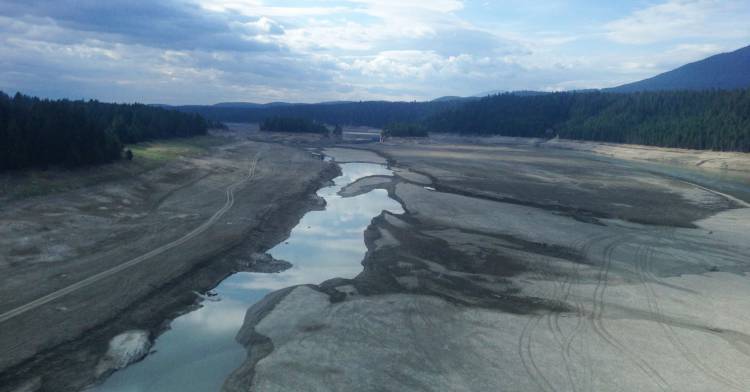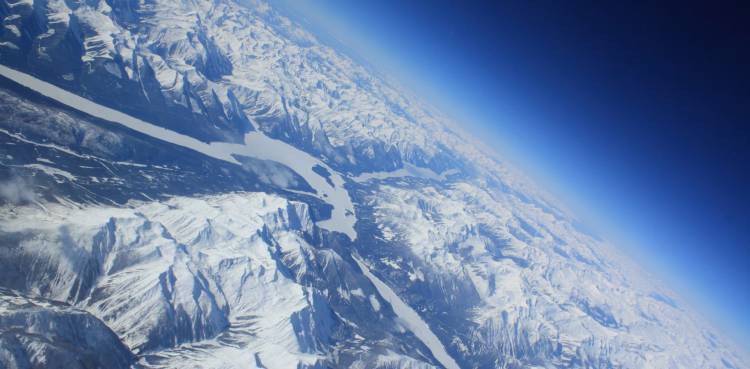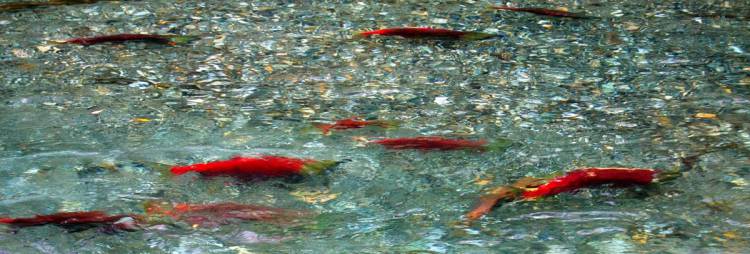The Columbia River Treaty renegotiation has begun, with the first substantive meetings between Canada and the US at the end of May. More than five decades after the treaty was first signed, we can finally ask ourselves: what should a modern Columbia River Treaty look like?
The original treaty has only two priorities: power generation and flood control. It’s time to add other priorities, like our environment and the return of salmon.
First Nations were not even consulted for the original treaty, which changed so much of the landscape within their traditional territories. And as we renegotiate the treaty, they must be at the table.

The Columbia River Treaty can’t ignore our environment
Signed in 1964, the treaty covers four dams: Duncan, Keenleyside and Mica on the Columbia River in Canada and Libby Dam in Montana, which creates the Koocanusa Reservoir. While we tend to think of the dams as sources of electricity, they serve another important purpose: holding back water to prevent flooding downstream, mostly in the US. Decades ago, the US paid Canada a one-time payment for the flood control benefits and the money was used to build Canada’s three treaty dams. All the storage capacity in Canada is used to smooth out flows downstream over the year, so the US can generate a lot more electricity downstream. Under the current treaty, Canada is entitled to the value of half of that extra electricity.
While the economic and safety benefits of the treaty dams have been substantial, so have the environmental and cultural losses. Not only did we lose hundreds of square kilometres of important valley-bottom land, roughly two thousand people were displaced. Many fish spawning areas were lost. The major fluctuations in the reservoir levels, which in some cases are more than 30m, make it difficult for vegetation along the edge of the reservoir to survive, leaving those riparian plant communities badly degraded and at the mercy of a constantly shifting shoreline. Shoreline habitat is very important for wildlife both large and small, so its loss is felt not just in the valley bottoms, but across our landscape.
Under the original treaty, reservoir levels in the Canadian reservoirs are managed jointly by the two countries, with our environment often an afterthought to maximizing electrical generation. In 2018, that’s not acceptable. It’s time to include ecological function as an equal priority in the treaty and to establish a cross-border ecological board in parallel with the engineering board set up under treaty.
Even small changes in flows downstream of the dams can have big environmental impacts. Varying reservoir levels to mimic floods every few years, without keeping water levels high for long periods, and avoiding drastic drawdowns that leave the shoreline dry for months, will give vegetation a fighting chance. More natural flows will also help restore the incredible biological productivity in river floodplains along the edges of the reservoir. Fine sediments, which carry nutrients downstream and spread them over floodplains in the spring, are held up behind dams, but flow changes can help move more sediment downstream. And the particular needs of fish, like kokanee, bull trout and sturgeon, for spawning and other life stages, can be met with careful study and consideration of ecological needs.
Bringing back our salmon
Before the Grand Coulee Dam was completed in 1942, chinook salmon swam 2000km upstream to Canal Flats to spawn, and sockeye and steelhead also swam into Canadian rivers and lakes. While Grand Coulee and Chief Joseph dams pre-date the treaty and aren’t covered by it, they are the two major roadblocks to salmon migration before the Canadian border.
With salmon restoration, led by First Nations and Tribes on both sides of the border, becoming more and more feasible, it’s time for Canada and the US to work together to not just bring salmon back to the entire Columbia River, but to give them the ecological conditions they need to thrive despite the challenges they face in this heavily-altered river. The Columbia River Treaty is the natural place for Canada and the US to cooperate to meet those challenges.
Given the interconnected nature of the requirements for salmon restoration with the needs of power generation, flood control and ecological function, salmon restoration must be integrated into the treaty. Beyond the environmental value of salmon, their cultural value to First Nations is incalculable. If we are to truly embrace reconciliation, bringing back the salmon has to be a priority.

Canada needs control of Koocanusa
There’s a strange imbalance in the original treaty: of the four treaty dams, the three in Canada, which create reservoirs exclusively in Canada, are co-managed by our two countries, while Libby Dam in Montana, which creates the Koocanusa Reservoir that spans the border, is mostly managed by the US, with far less Canadian decision making power. The impacts of Libby Dam are felt not just upstream in the 68 kilometres on the Canadian side of the reservoir, but downstream as well, after the Kootenay River returns to Canada at Creston. It only makes sense that the renegotiated Columbia River Treaty should give Canada at least as much control over Libby Dam as the US has over the Canadian dams.
First Nations must be at the table
Back in the 1960s, First Nations’ rights were shamefully ignored in the treaty negotiation process. There was no meaningful consultation. This time, we must respect the sovereignty the Ktunaxa, Secwepmec and the Okanagan Nation Alliance have in their traditional territories within the Columbia River watershed. At a minimum, that means these nations should be at the table for the negotiations.
And local people, who were also generally ignored in the original treaty process, need to have their voices heard too. The BC Government is asking the people of the Columbia Basin for their input. Your best opportunity to be heard will be at a series of public meetings in the most heavily affected areas in mid-June, including Nelson, Creston, Castlegar, Revelstoke, Golden, Nakusp, Jaffray, Meadow Creek and Valemont.
Hydroelectricity is always controversial in BC. While we can’t undo the flooding and environmental and cultural impacts of the Columbia River Treaty dams, we can make sure that the renegotiated treaty puts our environment on equal footing with electrical generation and flood control, helps us bring back salmon and respects First Nations’ sovereignty.

Header photo by Murray Foubister








